You Want Me To Cook These Things For How Long?!?
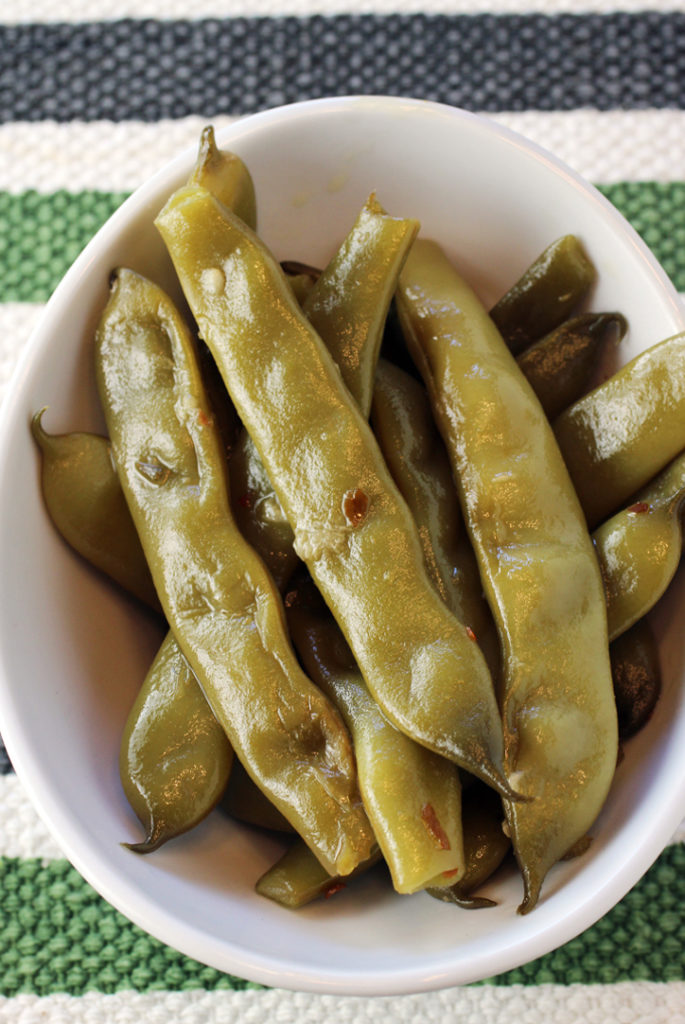
The first time I came across this recipe for romano beans, I did a double-take.
Even then, I couldn’t quite believe it.
That’s because it calls for cooking these meaty Italian broad beans on the stove-top for two hours. Yes, fresh beans, not dried, cooked for two whole hours.
“Long-Cooked Romano Beans” boggled my mind.
But I had faith. After all, the recipe is by the late-great Judy Rogers, and it comes from her seminal classic, “The Zuni Cafe Cookbook A Compendium of Recipes & Cooking Lessons from San Francisco’s Beloved Restaurant” (W.W. Norton and Company, 2002).
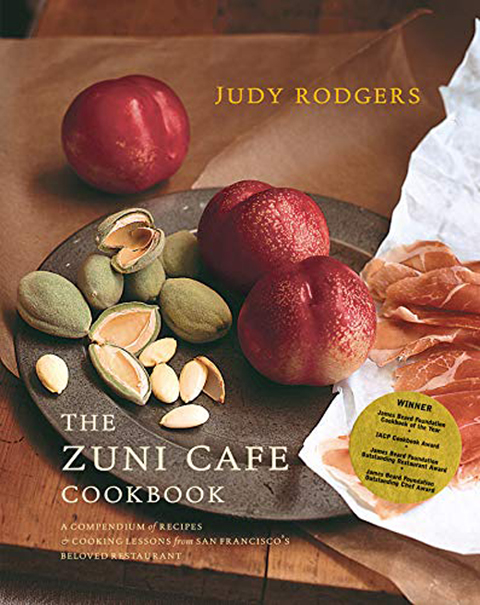
Surely, the chef who created the most perfect roast chicken of all time and so many other iconic California cuisine staples was worth trusting on this, even if in the back of my mind, I feared winding up with green beans as pallid as those from a can.
My doubts were put to rest with one taste of the final product. Sure, these beans lose their lively green coloring after so much cooking, but they gain a melty, velvety texture along with a deep, incomparably sweet flavor.
This technique requires barely any effort, too. Just place the beans in a Dutch oven, drizzle with olive oil, salt, chili flakes, and garlic. Then, put the lid on, and let it all cook on a very low burner heat for a patient two hours.
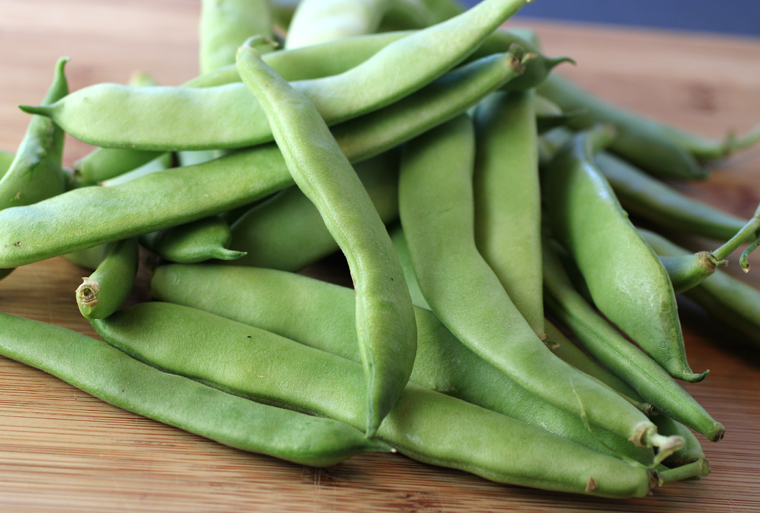
About half way through the cooking time, the beans will begin to sweat and glisten more and more, sort of like they’re soldiering through a Bikram yoga class, if you know what I mean.
After two hours, they’ll be slightly shriveled (hey, they just survived Bikram), and the garlic cloves will have melted, coating the beans with their deliciously tamed flavor.
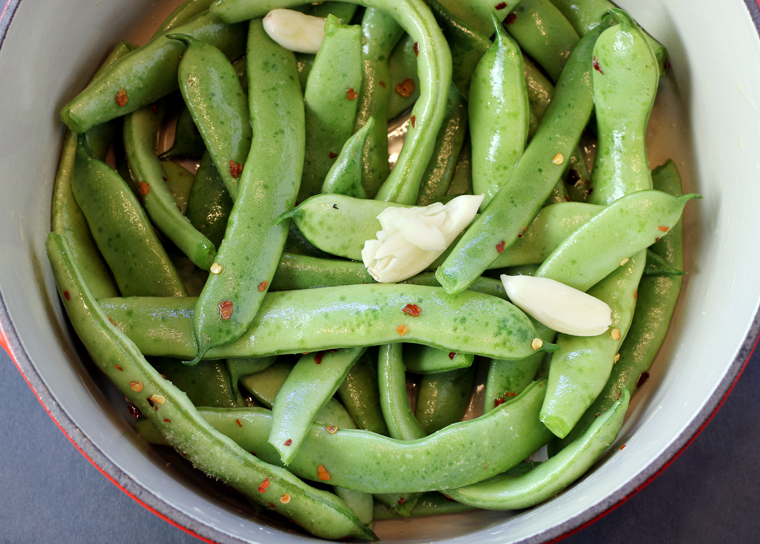
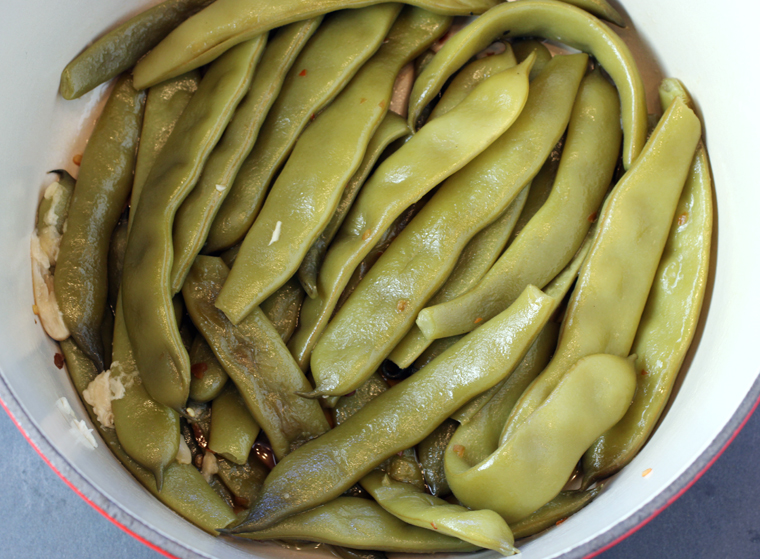
The recipe calls for 2 pounds of romano beans. I only had 1 pound, and the recipe still worked great. If you can’t get your hands on romano beans, you can also use mature Blue Lake beans instead, Rogers writes in the book. Just don’t try yellow wax beans, which won’t hold up well in the long cooking process.
Like me, you might balk at first about cooking fresh beans for such an inordinate amount of time. But trust. Plus, with shelter-in-place still very much a part of our lives, you’ve no doubt got ample time now for a recipe like this.
Long-Cooked Romano Beans
(Serves 4)
About 2 pounds romano beans
About 1/4 cup mild-tasting olive oil
Salt
A few pinches of chili flakes, to taste
2 to 4 garlic cloves, lightly crushed
Break or snap the stem ends off the beans. Unless they are badly shriveled, I leave the tail ends intact. Place in a 6-quart Dutch oven or crowd in a 4-quart saucepan. Drizzle and fold with olive oil to coat all the beans generously, sprinkling with salt and chili flakes as you go. I use my hands to do this. Drop the garlic cloves on top, cover, and place over very low heat. You should barely hear a faint sizzle. Stir a few times during the first 30 minutes, to make sure the bans on the bottom don’t scorch, covering the pot again quickly each time so the little steam the beans produce don’t evaporate (I don’t add water — the flavor and texture will suffer if you do).
Once the beans begin to soften, usually after about 45 minutes, stir again. Taste for salt. Once they have started to soften, you should notice the oil pooling shallowly on the bottom of the pot. Now check on the beans every 30 minutes or so, but stir only once more, and gently, to avoid crushing the beans. Cook until the beans are utterly tender and limp and have a rich, concentrated flavor, usually about 2 hours total cooking time (smaller beans make take less time than fleshy romanos). Waiting for this degree of doneness will require a leap of faith for anyone trained to favor al dente vegetables. The beans at the bottom of the pot may color a little during hte last 30 minutes before the whole pot is ready, but they will still be delicious.
From “The Zuni Cafe Cookbook” by Judy Rodgers
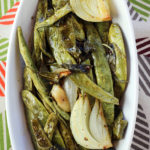
Plus: Slow-Roasted Romano Beans
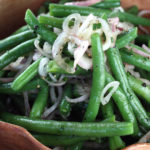
Green Bean Recipes to Enjoy: Green Bean Salad with Pickled Shallots

And: Green Beans in Brown Butter and Ginger Fish Sauce


The beans sound great. I had something like that at Michael Chiarello’s Bottega many years ago, with crumbled Italian sausage. What if you put them in the oven for the 2 Hours?
Steve: I bet those beans would be incredible with the addition of sausage. I don’t know if it would take 2 hours to cook the beans in the oven, even if you’d still have to cook them on a very low temperature. I’m guessing because they’d be enveloped in heat in the oven, it might take less time.
Just made this with yellow Romano beans I got in my CSA. Had never had them before. This recipe is dynamite! They really are on the tougher side so it makes sense to cook them for a longer time period. The only thing I would make sure to do, is take any tough strings off the sides of the beans. Thanks for the recipe!
Hi Kathryn: Good advice to remove any tough strings like you would do with snap peas. So glad you enjoyed this recipe. I love how it brings out the inherent sweetness of the beans.
Pingback: 17 Types of Fresh Beans and Peas You’ll Find at the Farmers Market – Produce Pack